Fridging Leia Organa: The Failures of The Rise of Skywalker, Part 2
From its inception almost a decade ago, an unfortunate recurring theme of our commentary at FANgirl Blog involves the poor track record of the Star Wars franchise with its female characters, and especially with the conclusions of prominent characters’ story arcs. As the Sequel Trilogy unfolded, we expressed our concerns that danger signs for Rey and Leia remained. Among the new generation, the trilogy originated as the origin story of a young female Jedi, and we questioned whether the third film would diminish Rey’s significance or undermine her character by comparison to her male predecessor equivalents, Luke and Anakin. (In the end, the result was mixed, as we discuss in our posts about Rey’s Hero’s Journey and the first post in this series.) For the legacy characters, numerous public statements from directors, writers, and executives (including again recently, in connection with the promotional tour for The Rise of Skywalker) have confirmed that the new films set out to pass the torch from Han in Episode VII, Luke in Episode VIII, and Leia in Episode IX. Thus the end of the Sequel Trilogy would determine not only Rey’s fate in her three-movie story, but also the culmination of Leia’s arc over a six-movie story.
Real life tragedy, of course, got in the way. Carrie Fisher’s untimely death in December 2016 deprived everyone, but most of all Carrie herself, of the opportunity to experience her bringing to fulfillment the story she began with the iconic self-rescuing princess in 1977. In the truest and literal sense, her loss is irreplaceable.
The Sequel Trilogy’s final episode, though, had to go on. The filmmakers – writers J.J. Abrams and Chris Terrio, together with the rest of the development team and key executives – faced a variety of options, each of which carried significant downsides. Despite ILM’s achievement with Tarkin in Rogue One, the idea of using a computer-generated mask to enable another actress to perform the role with Carrie Fisher’s face was apparently never on the table. Abrams also has indicated in multiple interviews that he never seriously considered recasting the character to enable Leia to play a large role in the film without Fisher. The team fortunately also rejected the idea of keeping Leia entirely offscreen, either by relating her death in the opening crawl or by having her remain alive but only referenced in dialogue by other characters.
Ruling out these options left Abrams and Terrio with one viable solution, announced along with the movie’s cast list as principal photography began in the summer of 2018: the repurposing previously filmed footage of Carrie Fisher from The Force Awakens into new scenes, maintaining her performance and dialogue in a different context to advance the story of The Rise of Skywalker. (In the final film, Leia also appears briefly in several sequences either from behind or in profile entirely bathed in shadows, enabling a body double to perform the physical movements but without seeing Leia’s face or hearing her speak.) Better to give Leia a small onscreen role, they decided, than to give her no meaningful role at all.
While that decision is understandable, and perhaps the best solution for the franchise and the fandom that could have been accomplished under the circumstances, the tragedy of Carrie Fisher’s death does not absolve Abrams, Terrio, and the rest of the Lucasfilm and Disney team from responsibility for how they wrote and portrayed the conclusion of Leia’s story in The Rise of Skywalker. Moreover, given that Leia’s role would necessarily be small, it was all the more important to ensure that what was included was powerful and worthy of Carrie’s and Leia’s legacies – an ending that did not undermine or diminish her character. Unfortunately, Leia’s story in The Rise of Skywalker does exactly that.

Fridging the Self-Rescuing Princess
The year 2019 marks the twentieth anniversary of Gail Simone’s coining of the memorable moniker for the storytelling critique known as “fridging” – the death of a female character to serve as motivation, usually through emotional pain, for a male character. She launched her famous website Women In Refrigerators in 1999, taking the name from a 1994 Green Lantern issue in which the DC Comics hero discovers his murdered girlfriend’s corpse inside his apartment’s refrigerator. (The fridging critique is not necessarily limited to fatalities; the maiming, depowering, or other harm to a female character also can be included.) In the decades since, the critique has expanded far beyond comics, to encompass novels, television, movies, videogames, and any other storytelling. Despite the visibility of Simone’s website and associated critiques, the trope of fridging has persisted; Carolyn Cocca’s 2016 book Superwomen: Gender, Power, and Representationchronicles a number of instances.
Unfortunately, as Cocca discusses, the Star Wars franchise has a long and disappointing history with perpetuating the fridging trope. Most prominently, Padmé Amidala’s story began in 1999 in The Phantom Menace with great agency and heroism for the character. (Arguably Padmé is the first female lead in a Star Wars film; although Obi-Wan Kenobi is the Jedi apprentice and the plot hinges on discovering young Anakin Skywalker, it is Padmé whose story travels the beats of the Hero’s Journey in Episode I.) By 2005 in Revenge of the Sith, however, she is fridged: she has no agency and remains sidelined for all important components of the movie’s plot, and it is fear of her death, then her ultimate demise, that motivates and solidifies Anakin’s fall to the dark side to become Darth Vader. Two years later, in May 2007, the novel Legacy of the Force: Sacrifice fridged Mara Jade, the most famous and popular female character in the Expanded Universe (now Legends) storyline, in service of her nephew Jacen Solo’s descent to become Darth Caedus. The animated series The Clone Wars, created and overseen by George Lucas, added many great female characters to Star Wars – but ultimately fridged most of them, including Steela Gerrera (to motivate her brother Saw, who became a radicalized anti-Imperial rebel in Rogue One and Star Wars Rebels), Duchess Satine (murdered by Maul as revenge against Kenobi), Asajj Ventress (sacrificing herself to motivate Quinlan Vos to return to the light in Dark Disciple), and Mother Talzin (to motivate Maul after Son of Dathomir). The most important character in The Clone Wars, the young Jedi apprentice Ahsoka Tano, also would have been killed off by Lucas – doubling down on fridging Padmé to provide motivation for Anakin’s fall by fridging his longtime Padawan, as well – if Dave Filoni had not been able to persuade him to spare her. While Ahsoka’s unfair treatment by the Jedi Council and ultimate resignation from the Jedi Order still plays a role in motivating Anakin’s distrust of the Council in Revenge of the Sith, the story gave her agency in determining her own fate as a Jedi and avoided the worst version of the fridging trope. And whatever else might be said, it is undeniable that Leia Organa is the most important female character in all of Star Wars, whether examined in terms of history, story, or fandom.
In this context, it is more than inexcusable – it is offensive – that The Rise of Skywalker resolves the story of Leia Organa by fridging her.
This is no mere issue of interpretation or nuance. The movie is unambiguous in portraying, on the screen, that Leia’s death occurs precisely to provide motivation for her son to renounce his dark identity as Kylo Ren and return to the light as Ben Solo. Constrained by the limited footage of Carrie Fisher, it is Maz Kanata who explains in dialogue that Leia’s attempt to reach her son will take all the energy she has left. Kylo Ren hears his mother’s voice say “Ben” and the scene cuts back to the Resistance base, where Leia’s hand slumps to her side and Artoo beeps forlornly. Rey too reacts to Leia’s death, confirming what Kylo Ren has experienced. And then Kylo Ren’s memories lead him to reflect that although his mother is gone, the cause she fought for remains. He flings his red lightsaber into the ocean, symbolizing his renunciation of the dark side. His mother’s death has changed his heart.
Given her longstanding critiques of misogyny and sexism in Hollywood, it is difficult to imagine that Carrie Fisher would have agreed to validate the perpetuation of this trope for Leia’s ending. Given her outspoken commentary on U.S. politics, including the presidential election less than two months before her death, it is less than clear she would have supported the story redeeming Kylo Ren at all. But at least with her participation, Ben Solo’s redemption could have occurred without fridging Leia: they could have spoken in person, face to face, his mother’s love reaching his soul without taking her life. In her absence, The Rise of Skywalker fridges Leia to redeem Ben.
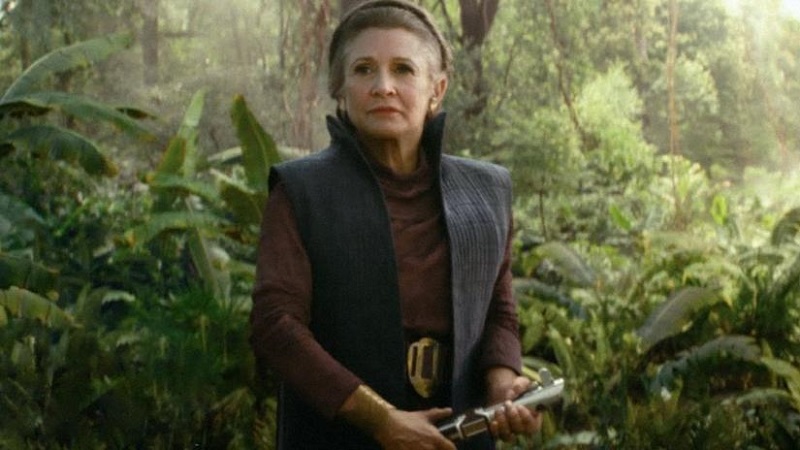
An Underwhelming Jedi Leia
Ever since Return of the Jedi confirmed Leia as the “another” Skywalker, to whom Luke should “pass on what you have learned” in his Jedi training, her fans have waited for the promise of her potential to bloom. In the Expanded Universe (now Legends) tales, Leia pursued a life of politics and did not complete her training and become a Jedi Knight until the Dark Nest books set more than thirty years after the Battle of Endor. Despite the well-known dissatisfaction with this path among many fans, Lucasfilm replicated it after the reboot. In The Force Awakens, Leia is a paramilitary general and former Senator who never took on the life of a Jedi; in The Last Jedi, she briefly uses the Force to save herself from the destruction of the Raddus bridge, apparently to foreshadow the intended greater role for her powers in Episode IX. In The Rise of Skywalker, taking place at almost exactly the same point on the in-universe timeline as Dark Nest, Leia’s identity as a Jedi was meant to come to fruition.
Though Rey uses the honorific “Master” toward Leia, in the film it is quite apparent that Rey is the one who is more advanced in her Jedi training, learning, and abilities. It is Rey whose meditations include levitating in the air amid orbiting rocks – a visual Abrams originally conceived as how we might first see Luke Skywalker at Ahch-To. It is Rey who has thoroughly read the ancient Jedi texts. It is Rey who can use the Force to heal, to stall a departing spaceship in midair, to make supernatural leaps, and eventually to commune with the spirits of Jedi past.
Perhaps Abrams and Terrio felt that feats of physical prowess or lightsaber combat were precluded by limiting themselves to Carrie Fisher’s previously filmed scenes. But their own story, in a flashback, shows that Leia in her youth had trained in lightsaber combat while wearing an opaque blast shield helmet – the same one Rey dons during part of her training course. If Leia can fight with a lightsaber while hidden by mask… why can’t she train Rey that way? Or, potentially, engage an adversary in combat that way? What interesting symbolism might have been found in masked Leia facing off against masked Kylo Ren?
Instead, The Rise of Skywalker shows Leia making only one use of the Force – the telepathic connection to her son that fridges her. When Luke reached across the galaxy in the Force in The Last Jedi, he projected a lengthy and sophisticated illusion over a substantial period of time. Leia’s terminal effort, by contrast, involves merely a single word. Perhaps the audience is supposed to infer, as hinted in several Journey to The Rise of Skywalker books and comics, that Leia has never fully recovered from her ejection into space in The Last Jedi, so that like Rey and Ben at the end of the film, her reduced life essence makes fatal an action that would not have cost her life at full strength. Or perhaps we are meant to infer that a longer and more extensive telepathic conversation between mother and son actually occurred in-universe, but was not included onscreen in the real world due to Carrie Fisher’s absence to record it. But most of all, it would have been far superior for the movie to have made clear that Leia was creating the illusion of Han Solo to converse with Ben, with the audience readily accepting Harrison Ford as a proxy for Fisher under the circumstances – except that Ben’s dialogue expressly calls out his father as a memory, and their conversation echoes their mutual final words at Starkiller Base rather than what Ben’s mother would have said to him. The Rise of Skywalker limits Leia to a sole use of the Force, and does not do right by her with it.
Finally, The Rise of Skywalker undertakes an unfortunate choice of repetition in explaining Leia’s Jedi path. In Revenge of the Sith, the tragedy of her father, Anakin Skywalker, reaches its culmination. Anakin has a vision of Padmé’s death in childbirth. Rather than release his fear and accept the possibility of losing her – he does not, after all, see the child’s death, only his wife’s – his desperate quest for the power to save her leads him to the dark side. In the end, his attempt to stop his vision from coming true causes it to occur. In The Rise of Skywalker, Leia is given the same tragic arc. Luke explains to Rey that Leia in fact did begin her Jedi training with him, but gave it up after experiencing a vision of her son’s death at the end of her Jedi path. By trying to stop her vision from coming true, Leia creates the circumstances that result in that very thing happening. (Again, it is worth considering what Carrie Fisher might have thought of this story angle for Leia, had she been present to express her input.) Although Abrams has explained the Sequel Trilogy as in part about intergenerational trauma and dealing with the legacy of history, that does not explain why Leia makes the same tragic mistake about the Force as her father, rather than something more creative (or subversive) without being identical.
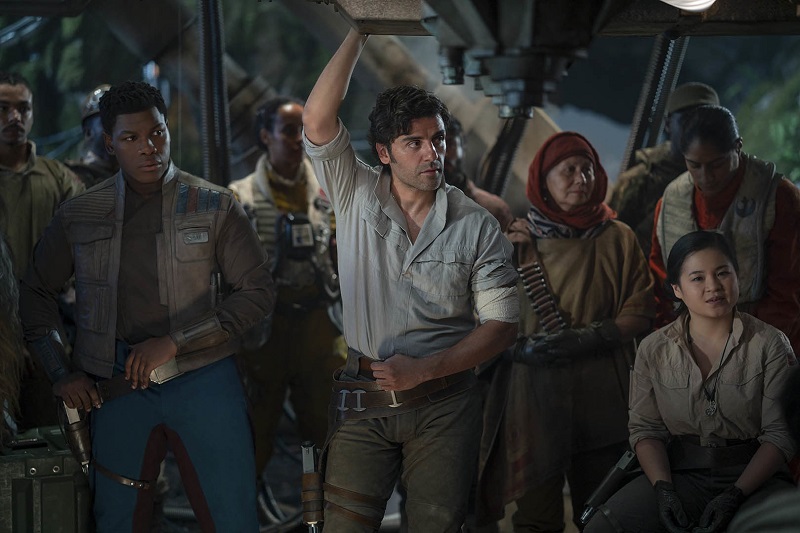
Compensating for Less Leia with More Men
Once the decision was made to limit Leia’s role in The Rise of Skywalker to previously filmed footage of Carrier Fisher, plus a few equally brief visual cheats in the shadows, the filmmakers faced the question of how they would tell the story of Episode IX to continue and reinforce Leia’s significance while compensating for her absence from the vast majority of the film. To truly honor Carrie’s importance to Star Wars – and her wish that Star Wars move past the days when Leia was the only major female character in the story – they should have maximized the opportunity for Leia’s absence to be filled by other female characters. Instead, it is almost entirely men who take Leia’s place.
At the beginning of the film, Luke’s lightsaber serves as the symbol of Rey’s unfinished Jedi training. First, she hands it to Leia, pledging to earn it. Then Leia wordlessly hands it back, indicating Rey is ready. On Ahch-To, spectral Luke validates that Rey is ready to face Palpatine. And it is Luke, not Leia, who passes on Leia’s lightsaber to Rey. Luke is Leia’s twin sibling, though, and the flashback connects his training of Leia in the past to Leia’s training of Rey in the present. If Leia could not be present more fully as a Jedi Master, Luke becomes at least a sensible and earned substitute.
The absence of Carrie Fisher also deprived the filmmakers of the chance to show a face to face conversation between mother and son to create Ben Solo’s redemption. As noted above, one solution would have been to use Harrison Ford’s Han Solo as a proxy, reaching Ben with the face of his father and the words of his mother. An even bolder choice, though, would have substituted a different character with profound thematic resonance for the entire nine-movie Skywalker saga: Padmé Amidala. After all, Kylo Ren has been obsessed with his villainous grandfather; who better to show him the error of his ways than his heroic grandmother, Anakin’s wife and Leia’s mother? The conversation could have been lengthy and emotional, and addressed not only Ben Solo and his choices, and Leia and Han and their choices, but Anakin Skywalker and Darth Vader, as well. Instead of connecting Ben Solo’s redemption to The Force Awakens alone, Padmé would have linked her grandson’s fate to Return of the Jedi and Revenge of the Sith,and even The Phantom Menace, where it all began. And the circle would have been drawn complete with a female character, instead of yet another father-son moment.
After Leia’s death, Poe officially becomes leader of the Resistance. This development, at least, was expressly set up in The Last Jedi, written and filmed in full prior to Carrie’s death. In a meaningful sense, Poe inheriting leadership is derived from Admiral Holdo as well as General Organa. (Poe immediately appointing Finn as his co-general is similarly earned by their camaraderie across all three films, and echoes the Star Wars tradition of accelerated field promotions in dire straits.) But when Poe experiences his moment of self-doubt about the impending final battle, it is Lando Calrissian who gives him the pep talk. In one sense, Lando has the history and gravitas, as the only surviving member of the old guard (not counting Chewbacca, who can’t deliver this sort of dialogue), to inspire Poe with the past to face the present. But it is yet again replacing Leia with a man. In The Force Awakens, Maz Kanata has key dialogue at the table in her castle establishing her familiarity with history, the dark side, and the need for the light to fight. Maz also knows Han, Leia, and Luke, and can validate their experiences. She would have had the credibility to inspire Poe, too – and she was present at the Resistance base at the time.
Toward the end of The Last Jedi, Leia sends out a call for allies to come to the aid of the Resistance, but the galaxy has lost its hope in the face of the First Order’s onslaught, and no one arrives. Then Luke Skywalker makes his last stand. He enables the Resistance to escape, and his legend reignites the spark of hope, symbolized by the stable boy and his broom in the final shot of the movie. A year later in-universe in The Rise of Skywalker, as foreshadowed in the Journey to The Rise of Skywalker books and comics, that spark has not yet expanded into a fire that can burn the First Order down. The transmission in the voice of the Emperor, announcing his massive fleet and intention to reconquer the galaxy, certainly hasn’t helped. Although Rey is the one who provides the coordinates for the path to Exegol to enable the attack, all the work of mustering allies to fight is done by men. Poe gives the inspiring speech, then send Lando and Chewie in the Falcon to gather the ragtag armada. Though presumably unintentional, the two movies in tandem tell us that Leia’s bravery was not enough to inspire allies to join the Resistance, but Luke, Lando, and Poe can successfully accomplish what she could not. Once more, in the absence of Leia, it is men who take her place in The Rise of Skywalker.
Leia’s Future After The Rise of Skywalker
Carrie Fisher has left us and the Sequel Trilogy has reached its end, but Leia will never be gone. In animation, books, comics, videogames, and more, Leia already has an immense and incredible range of stories – and there is more to come, starting with the January 2020 renumbering of the principal Star Wars comic title from Marvel as a new issue #1 to coincide with ongoing series having reached the events of The Empire Strikes Back. And as Star Wars evolves on Disney+ and feature films, perhaps someday an actress will join the ranks of Ewan McGregor, Alden Ehrenreich, and Donald Glover to reprise and reinvent Leia Organa on screen once more. Not only in the permanence of the catalog of Star Wars films in which Carrie appeared, but also in future Star Wars storytelling, Leia will be with us always.
Related Links:
- Leia At Risk: Grief, Nostalgia, and Mythic Storytelling (Jan. 2017)
- Why We Support Recasting of Leia Organa (Apr. 2017)
- Leia Organa: Leader of the New Jedi Order (Dec. 2017)
- Leia At Risk Revisited: The Stakes After The Last Jedi (Jan. 2018)
- BJ Priester Talks The Acolyte Episode 6 on Who’s the Bossk? - July 7, 2024
- Dave Filoni Talks Writing AHSOKA and Guiding the Future of Star Wars Storytelling - June 21, 2024
- Lessons in Franchise Management – MCU: The Reign of Marvel Studios - January 14, 2024

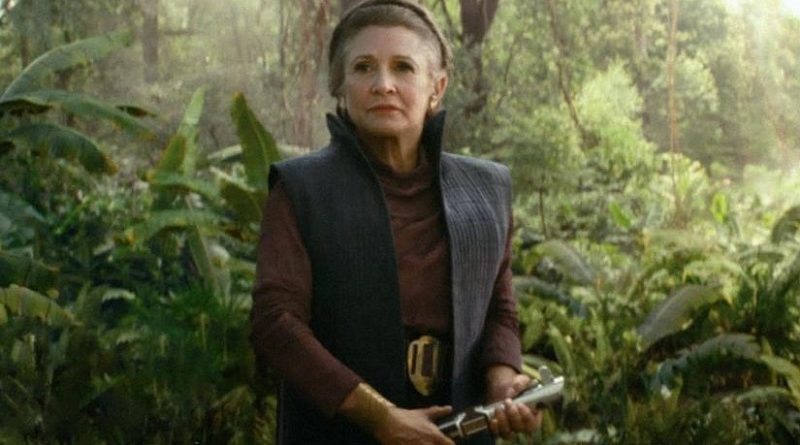








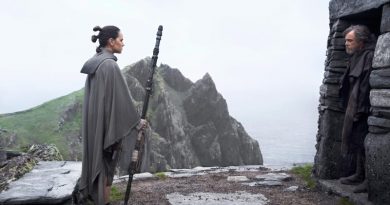
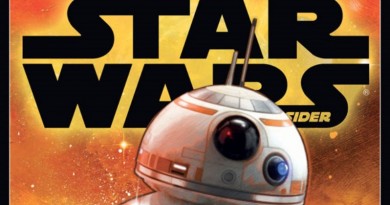
Pingback:The End of the Skywalker Saga: The Failures of The Rise of Skywalker, Part 5 – FANgirl Blog